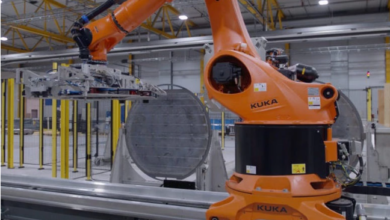Yara, Engie, Atco, Agig share Arena $103M funding
Renewable hydrogen can decarbonise ammonia production, while renewable ammonia can serve as a renewable feedstock for industrial uses, green power generation and shipping.

The Australian Renewable Energy Agency (Arena), an independent federal government agency working for increasing the supply of renewable energy in Australia, has announced a total of A$103.3 million (US$ 80 million) of funding for three commercial-scale hydrogen projects as part of its Renewable Hydrogen Deployment Funding.
The agency has selected Engie Renewables, ATCO Australia and Australian Gas Networks, which would install 10 MW electrolysers in Western Australia and Victoria. These facilities would be the largest renewable hydrogen demonstrations in the world.
Darren Miller, Arean CEO, said, “Our hydrogen industry in Australia is in its infancy, so the lessons learned from these three projects – and the entire funding round – will be important in driving our future hydrogen economy.”
Yara Pilbara and Engie Project
Yara, a global producer of ammonia and Engie, a global low-carbon energy and services group, are co-developing a renewable hydrogen plant at the existing Yara Pilbara ammonia plant to deliver green ammonia. The plant will be using renewable power to produce renewable ammonia supplying to end-use sectors such as power generation, shipping, fertiliser or mining explosives.
Arena is providing a A$ 42.5 million (US$ 32.8 million) grant for the project, which is in addition to previous Arena funding for the project’s feasibility study and the WA Government’s ongoing support for the project with a A$ 2 million (US$ 1.5 million) grant and assistance with site selection, permitting and stakeholder engagement.
The project will build a 10 MW electrolyser which would use an on-site facility of photovoltaic panels with a battery storage system allowing the plant to operate without being connected to the grid.
The project is set for completion in 2023, producing up to 625 tonnes/year of renewable hydrogen and 3,700 tonnes/year of renewable ammonia. This initial first phase would be pivotal to enable the facility to become the “Pilbara Hydrogen Hub”, building on the existing export infrastructure.
Magnus Krogh Ankarstrand, President of Clean Ammonia in Yara International, said, “Yara will integrate the clean hydrogen produced in the project into the existing ammonia operations to demonstrate increased renewable hydrogen use can reduce the dependence on fossil fuels.”
Michèle Azalbert, CEO of Engie’s Hydrogen Business Unit, said, “Renewable hydrogen plays a critical role in the decarbonisation of energy-intensive sectors.”
Atco and Agig hydrogen project
Atco and Australian Gas Infrastructure Group’s (Agig) has received A$ 28.7 million (US$ 22.2 million) in funding from the Arena for their plan of building a commercial scale, green hydrogen production facility called the Clean Energy Innovation Park (Ceip) project.
The Ceip project will build a commercial-scale green hydrogen supply chain, including a 10 MW electrolyser plant producing around 4 tonnes hydrogen/day and storage and delivery to the gas network injection points. It is planned to be co-located with the 180 MW Warradarge Wind Farm in Western Australia’s Mid-West, providing renewable electricity to power the electrolyser. Hydrogen generated will then be transported via truck to gas network injection points. Funding will enable additional planning work to take place, with a Final Investment Decision expected in December 2022.
Patrick Creaghan, MD and COO of Atco said, “The development of the Ceip has the dual benefit of not only contributing to the decarbonisation of the gas distribution network, it also allows us to generate the economies of scale required to expand the demand and use of renewable hydrogen as a commercially viable fuel.”
Murray Valley Hydrogen Park Project
Agig and Engie secured A$ 32.1 million (US$ 24.8 million) in funding from Arena to support the delivery of a new hydrogen blending project in Wodonga, Victoria, known as Hydrogen Park Murray Valley (HyP Murray Valley).
HyP Murray Valley comprises a 10 MW electrolyser and will use renewable power to generate hydrogen from mid-2023. It will blend around 10% renewable hydrogen into the existing natural gas network, owned by Australian Gas Networks (AGN, part of Agig), to supply over 40,000 existing customers in Wodonga, Victoria and nearby Albury, New South Wales.
HyP Murray Valley will be located at North East Water’s West Wodonga Wastewater Treatment Plant, benefiting from water and renewable electricity access. Both partners will cover the entire hydrogen supply chain, from production to retail, to deliver HyP Murray Valley. The final investment decision is expected to be made by early 2022.
Ben Wilson, Agig CEO, said, “HyP Murray Valley take us a step closer to making a 100% renewable gas supply a reality.”
